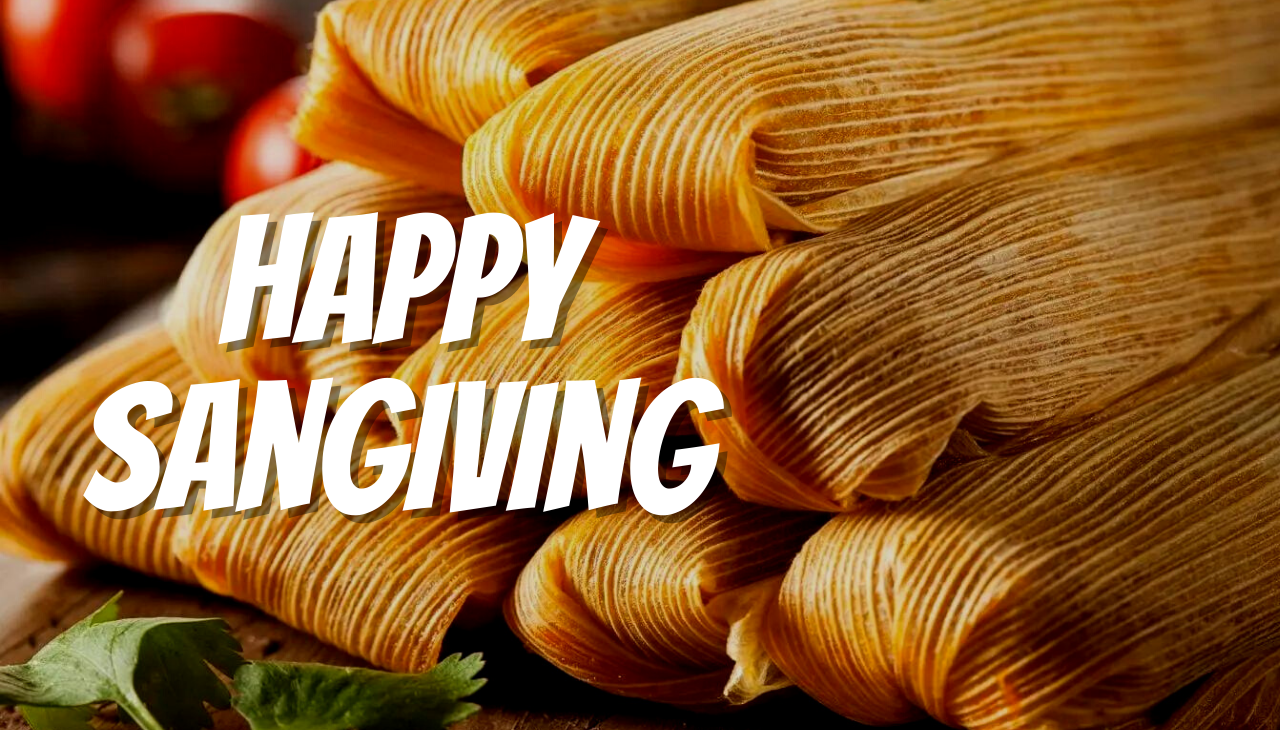
Tamales, Pozole, Jamón, What Mexicans in America eat and how they celebrate their rendition of Thanksgiving
For Mexicans living in the U.S., they bring their own traditions over for the American holiday.
Thanksgiving is a U.S.-only holiday. However, the U.S. is a country composed of many different cultures and people. When individuals from other countries come to the States, they usually bring their traditions, culture and everything that comes with them — food, drinks, and celebrations, to name a few.
The same is for Mexicans and second-generation Mexicans now living in the U.S. While some may not totally adopt the American way of celebrating certain holidays — or holidays in general — either way, they find a way to celebrate their respective renditions of certain American traditions and festivities.
In honor of Thanksgiving, AL DÍA interviewed a number of Mexican-Americans to see how they did it on America’s day of stuffing its face.
When you think of Thanksgiving, you usually think of one of many different things, such as turkey, stuffing, mashed potatoes, mac and cheese, and so on.
While some Mexicans now living in the U.S. may do just that, others incorporate or replace that with food, sweets, and games from their homeland, and incorporate them into their respective celebrations.
For some of the different Mexicans and Mexican-Americans AL DÍA spoke to, their respective renditions of Thanksgiving differed from each other, but were similar.
In terms of food, tamales was the most common food item. It’s one of the more traditional and popular foods seen at a Mexican Thanksgiving table. And there are so many different kinds! The same way there are different wines for different courses of a meal, tamales have the same rule.
There are Tamales de Puerco (Pork), Tamales Verdes (Green), Tamales de Elote (Corn), Tamales dulces (Sweet, with different kinds of fillings as a dessert piece), Tamales de Mole, Tamales de frijol (Beans), and so many more.
Other foods are Menudo and Pozole — two different types of Mexican traditional soups — which are considered comfort foods. Pozole is also a common sight on Mexican Thanksgiving tables, and there are three main different types of Pozole you might see — red, white, or green — like the Mexican flag. The only real similarities between Menudo and Pozole are that both soups use hominy — dried maize (corn) — as the main ingredient.
For Pozole, the three types are all different in flavor and garner different flavor palettes. You will find either pork or chicken that are slow cooked in a massive pot. But like any other soup, the broth — along with the maize — is what is assembled ahead of time. You can add cebolla y cilantro (chopped and diced cilantro and onions) and lime to further compliment the dish.
Menudo is one of the more traditional dishes you will also see, but every family will prepare it a different way, so expect some differences depending on the household. Similar to Pozole, there are two types — red and white.
Both versions use the dried maize (corn), but Menudo uses cow tripe — the lining from the stomach of a cow or pig can also be used. In the broth, it is also crucial that lime, and cebolla y cilantro are staples. Some people — including me — use pan bolillo (bread) toasted with butter. Red Menudo is similar but different chili peppers are added, giving it a distinct color and taste.
A number of people interviewed by AL DÍA also said oven-cooked jamón (ham) with pineapple was also on the Thanksgiving table. The only American food to be present on most Mexican-American Thanksgiving tables of people AL DÍA spoke to was mashed potatoes.
RELATED CONTENT
Another common food to be seen is arroz con leche — rice pudding made from rice mixed with milk and other ingredients, such as cinnamon, and vanilla. It is a common desert in Mexico.
For those living in areas with brutal winters like Philadelphia, Ponche may also be served. This is a fun, hot drink that can be made with or without alcohol. Like the aforementioned soups, you will find this hot citrus punch in a huge pot with different kinds of fruits stewing. It is made using water, fresh and dried fruits like tamarind, prunes, hibiscus, cinnamon, and sweetened with Piloncillo. You can serve it with or without alcohol, such as brandy or rum.
When it comes to desert, beyond the aforementioned arroz con leche and ponche, is the famous chocoflan. It is a normal flan cake, but made with a caramel topping. It is essentially a flan and chocolate cake baby. You may also see pan dulce (sweet bread) of different kinds — some with fillings, others with colorful exteriors, and different sizes and flavors.
Games are also part of the celebration with classics like Lotería (Lottery), which is a game similar to bingo, except instead of ping-pong balls and numbers, a person reads out the names of the images on a deck of cards. If you have said image on your card, you put down a bean, or a coin until all the images on your card covered.
To learn even more about local South Philly Mexican traditions, AL DÍA spoke to Reyna Guzman Cazares, a multidisciplinary artist, announcer and producer of Talent and Community on Philatinos Radio. She’s been a South Philly resident for more than 15 years, and gave some insight to her respective rendition of the American Holiday, but also a little background as to what Thanksgiving is for Mexicans in this country, and how long before they adapt to it.
She said that for Mexicans like herself, it may take a while before they fully adapt to the traditions of the holiday as the culture of Mexicans is to come to this country and work hard — sometimes two jobs. She mentioned that Mexicans come to this country and understand that Thanksgiving is for the American-born individuals and not for them. She added that it might take a couple years before a Mexican family fully adopts the holiday or before putting their own twist on it.
Guzman Casarez said that the adaptation process can speed up if Mexican immigrants then go on to have children in the U.S. because of what those kids will see at school with their friends and just adapting to the American culture around them overall. The parents and families at home will take that it in and make it their own respective rendition.
Guzman Casarez also confirmed some of the foods that are present at these diners. Pozole or menudo is what you typically see at the table according to her, as the cold weather in Philadelphia and everywhere else makes Mexicans want to cook up hot, comfort foods.
However you want to spend your Thanksgiving, or whatever food you eat, the important aspect is to spend it with those close to you — family and friends — and to remember to be thankful for all that is good in your life and eat some pozole!
There is no real right or wrong when it comes to how to celebrate Thanksgiving. We’re a country of many different cultures and traditions and that is what makes this country so special.











LEAVE A COMMENT:
Join the discussion! Leave a comment.